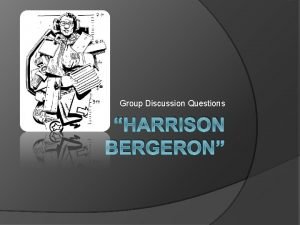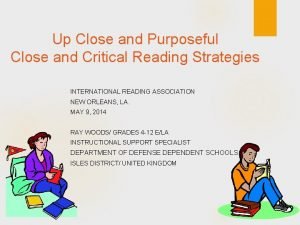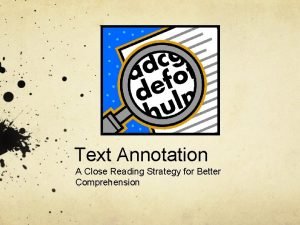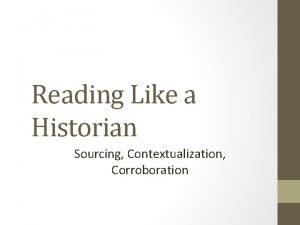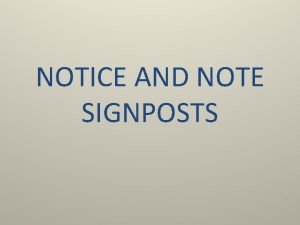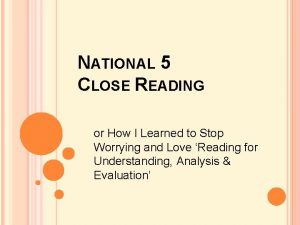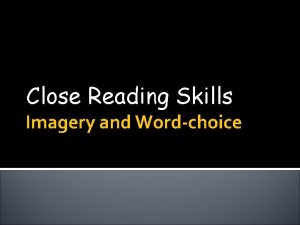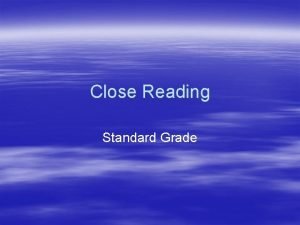Imagery Questions Close Reading How to 1 State







- Slides: 7

Imagery Questions Close Reading

How to… • 1. State which word or phrase you are referring to, and 2. say what kind of technique is being used. • 3. Explain what meaning is transferred from the image 4. to the subject.

Example • Use the four-step analysis for this simile: • “my teacher is like a dragon”. 1. In the phrase “my teacher is like a dragon”… 2. …the writer uses the simile. 3. Just as… a dragon is an angry, aggressive and terrible creature… 4. so… the teacher is just as terrifying.

Warning • Don’t get side-tracked by tricky vocabulary – zoom in on what you *do* know, not what you *don’t*.

Show the writer uses imagery to convey how the bat affected the way he thought about himself. I just slung it over my shoulder like the great weapon it was, my knight's sword. And I felt like some magnificent knight, some great protector of honour and virtue, whenever I walked onto the baseball diamond.

Show effective you find the writer's use of imagery in making her point clear. The UK is not a group of nations swamped by a tidal wave of immigration. Relatively speaking, Europe contends with a trickle of refugees compared with countries who border areas of famine, desperate poverty, or violent political upheaval.

Show the writer uses imagery to convey the “wonder of the library as a physical space”. At university, I discovered the wonder of the library as a physical space. Glasgow University has a skyscraper library, built around a vast atrium stretching up through the various floors. Each floor was devoted to a different subject classification. Working away on the economics floor, I could see other students above or below— chatting, flirting, doodling, panicking—all cocooned in their own separate worlds of knowledge. Intrigued, I soon took to exploring what was on these other planets: science, architecture, even a whole floor of novels.
